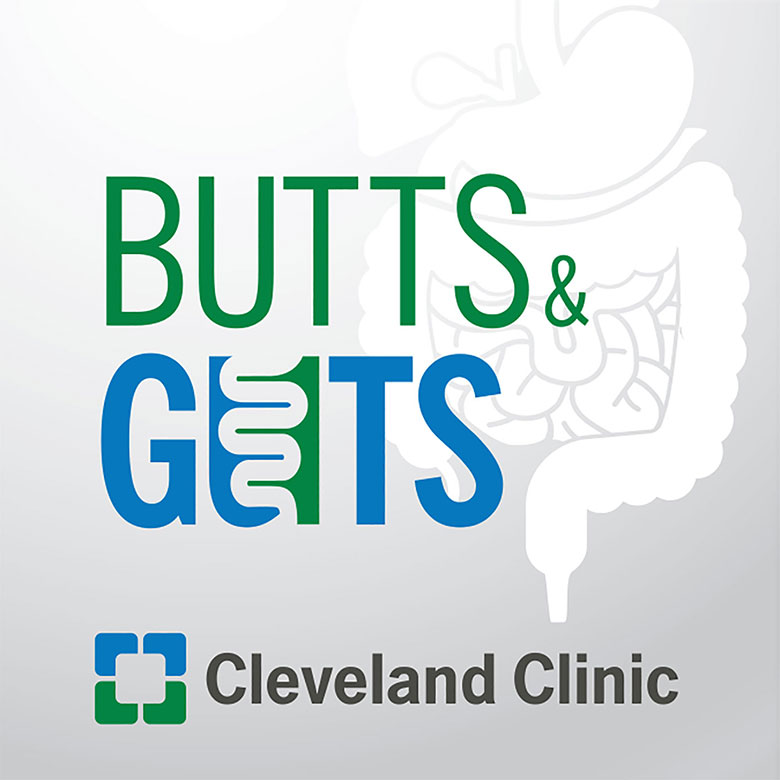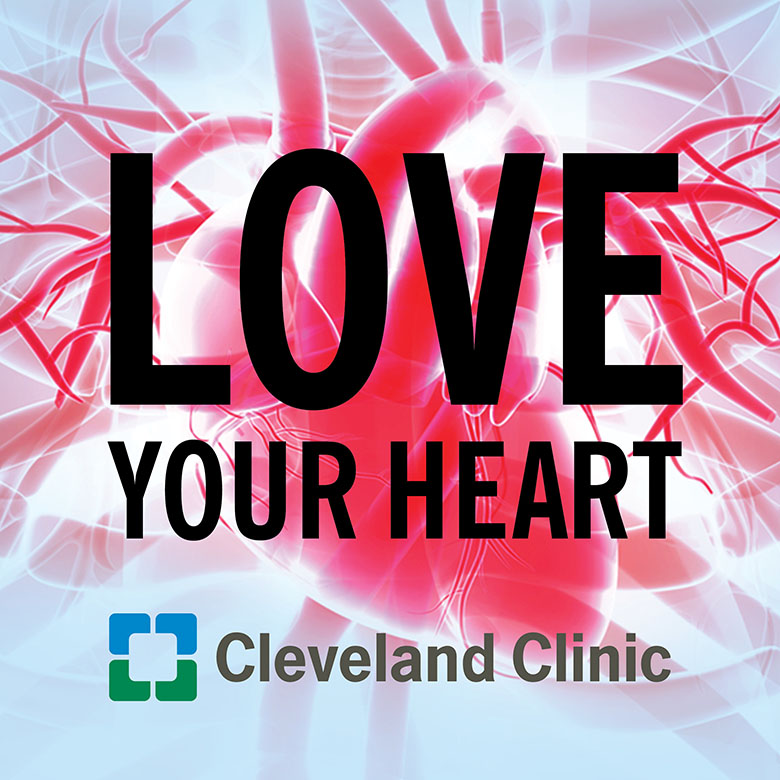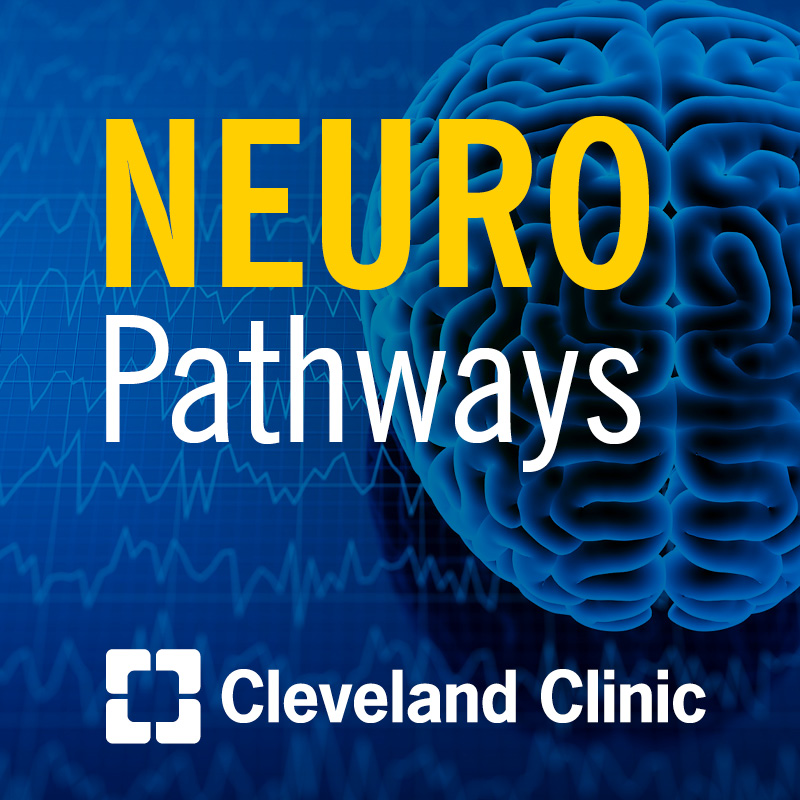Women and Stroke: Understanding the Risk Factors with Dr. Shazam Hussain
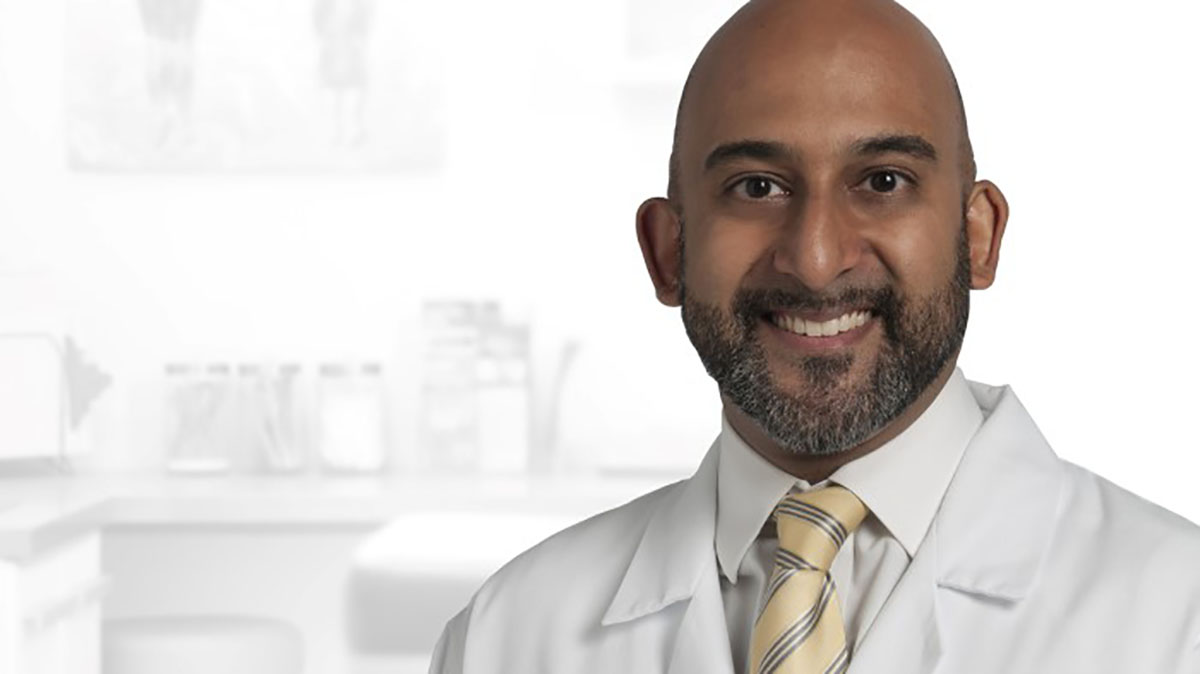
Subscribe: Apple Podcasts | Podcast Addict | Spotify | Buzzsprout
Women and Stroke: Understanding the Risk Factors with Dr. Shazam Hussain
Podcast Transcript
Nada Youssef: Hi, thank you for joining us. I'm your host Nada Youssef and you're listening to Health Essentials Podcast by Cleveland Clinic. We're broadcasting from Cleveland Clinic main campus here in Cleveland, Ohio and we're here with Dr. Shazam Hussain. Dr. Hussain is the Director of the Cerebrovascular Center for Cleveland Clinic's Neurological Institute. And today we are talking about women and stroke. Thank you so much for being here today.
Dr. Shazam H.: Thank you for having me.
Nada Youssef: Sure thing. Now before we begin, I would like to ask you some questions off topic just to get to know you on a personal level if you don't mind.
Dr. Shazam H.: Sure.
Nada Youssef: So what is the plus best place to be on a Friday night in Cleveland?
Dr. Shazam H.: I really enjoy myself being with my kids and hanging out with the family at home. We're not too much outgoing or going up too many places. So just a nice night, eating pizza and watch a movie at home.
Nada Youssef: So Netflix.
Dr. Shazam H.: That's pretty nice. Yeah.
Nada Youssef: Okay, cool. How about your best travel destination?
Dr. Shazam H.: Best travel destination? We go up to Canada quite a bit. That's where I'm originally from.
Nada Youssef: Oh, okay.
Dr. Shazam H.: So we like to go up there and visit family.
Nada Youssef: Sure, great. And what is your favorite all time concert?
Dr. Shazam H.: Favorite all time concert. You know what? When I was younger we went to a smashing pumpkins concert, which was really, it was quite an entertaining show.
Nada Youssef: Good.
Dr. Shazam H.: Very good time. So.
Nada Youssef: Perfect. And before we begin, please remember, this is for informational purposes only and it's not intended to replace your own physician's advice. So women and stroke. So women and men are similar in many ways, but not when it comes to stroke risk and symptoms. And each year stroke kills twice as many women as breast cancer does. However, this fact is widely unknown among the general public. And then here's some more facts for our listeners. Stroke is the third leading cause of death for women. In comparison, stroke is the fifth leading cause of death for men. Each year, 55,000 more women have a stroke than men, but many strokes are preventable and treatable and every woman can take steps to prevent stroke by knowing her risk factors and making healthy changes. Do women have more strokes than men?
Dr. Shazam H.: Yeah, if you look at the data as you mentioned, more women per year will have a stroke than men. A lot of it has to do with women do tend to live longer than men and unfortunately the biggest risk factor for stroke is age, which we don't have the cure for yet. So but by those numbers. Now in addition to that though, there are certain risk factors that are unique to women as compared to men, that may drive some of that increased numbers as well. So.
Nada Youssef: Okay. So in general, can you tell us what stroke symptoms, both women and men face that are similar or identical?
Dr. Shazam H.: Yeah, we'd like to tell our patients about an acronym called BEFAST. So B standing for balance, if you're have some kind of loss of balance where you can't walk. E for eyes, meaning vision, if you're having any trouble with your vision, losing vision in one eye or part of your visual field. Then fast, F stands for face, if there's droopiness in the face on one side or the other. A for arm, which stands for arm weakness or numbness, which could also apply to the leg as well. And then S for speech, if there's any difficulty speaking or getting your words out, slurring your words, or being unable to understand what's being said to you. And then the T is really important because that really emphasizes, reminds us about the time element of stroke. And that's a time to call 911. It's really important.
We lose somewhere in the order of about 2 million neurons a minute in the situation of acute stroke. And so it's really a situation where every second counts. And really again, the 911, it's important to call a paramedic or have medical attention. We don't want people driving themselves to the hospital. We really want those professionals to come and be able to help get you to the right place the first time.
Nada Youssef: And you mentioned 2 million neurons are lost. Is that correct?
Dr. Shazam H.: 2 million neurons of brain cells per minute in the situation of a stroke. So.
Nada Youssef: And those don't recover? Those are the ones they're gone, they're gone.
Dr. Shazam H.: Yeah. Unfortunately the brain is a very sensitive organ to damage, but there can be a recovery that happens after a stroke. But where areas of damage occur, largely those areas are not able to regenerate or come back.
Nada Youssef: Sure, sure. I want to ask you about the numbness. So if you have, my arms starts going numb. A lot of times even you hear a heart attack, it could be your left arm. So are there symptoms they have to be coupled with the numbness? Or is this just like numbness, I should go see a doctor for a stroke?
Dr. Shazam H.: Yeah. Good, good, great question. A numbness, it's a little bit of a tricky symptom sometimes because numbness can come from a lot of different reasons as you mentioned it could potentially even in heart attack, so you can see it and sometimes it's just a matter of someone pinching a nerve. So how to distinguish between them, usually when we're talking about numbness related to a stroke is typically going to involve the whole half of the body. It's going to involve the face, the arm and the leg altogether. Now when it first starts off, it may start in one part of the body, but usually it'll spread kind of throughout one side of the body.
Nada Youssef: So the numbness will go through the whole side.
Dr. Shazam H.: Typically speaking, it won't just ... if it's just involving one small area, like it's just your hand for example, usually that's very atypical that it'd be related to a stroke. That may be more related to a pinched nerve or something else, but if it's involving multiple parts, it's really extending across the entire half of the body that would be more concerning and probably would prompt you to go and get medical attention right away. So.
Nada Youssef: Great.
Dr. Shazam H.: Especially too if it's a sudden onset.
Nada Youssef: Right, right. All right. So what are the additional stroke symptoms uniquely identified in women? We talked about BEFAST for women and men. What is the stroke symptoms uniquely identified in women?
Dr. Shazam H.: Yeah, in women, so as you mentioned, we will make sure that they know about the big common stroke symptoms. Very much similar though to also with heart attack, women don't always have the same exact symptoms as what you'd expect based on what we think of in general for stroke. And so unfortunately a lot of those symptoms sometimes can be a little bit vague. Women can sometimes present with more dizziness or lightheadedness at the time of these events, they'll report more numbness and sometimes even other again, somewhat vague symptoms and things like hiccups or things like that. So and it's sometimes those again can be caused by many other reasons. I think the key there for women is to be attuned to know that strokes can happen in women, that they may happen even a little more commonly in women than men. Knowing about those really common symptoms that can occur.
And then also even if they're coupled with some of these other symptoms that are there, maybe women are just a little more in tuned to their bodies and pick up on these things a little bit better than men do. But those symptoms are there not to just try to wait it out or see what happens, it's important to get the medical attention right away. So.
Nada Youssef: Sure, sure. So I know you mentioned time is crucial. So how long is too long when recognizing stroke?
Dr. Shazam H.: Yeah, really as soon as you recognize those symptoms, unfortunately we hear it very, very commonly that someone will develop a stroke symptom and for whatever reason they say, "Well, even though I can't move my arm, maybe it'll just go away. Maybe I just slept funny or it'll come back." And they try to sit on and wait and wait and wait. And really when you have those kinds of symptoms, especially in that BEFAST, if you remember those symptoms that are in there, those are ... You really don't want to wait because every minute, as we mentioned, does count, the treatments that we give to you have a timeframe. And so really the first sign of those symptoms, it's always best to just call 911 and get into the hospital right away.
For the intravenous clot buster medication called tPA, which is a very common treatment for stroke, you have up to four and a half hours. In certain situations, we have to meet other criteria, but the time limit is usually within four and a half hours for that clot buster medicine. And then we do have all the other catheter treatments where we can go into blood vessels to remove clots, which you can have up to 24 hours. Regardless of the outer limit though, we also know that the sooner we can treat somebody is better. So the faster you can treat. The best outcomes come if you can treat someone within one hour of their symptoms starting. So.
Nada Youssef: And that could prevent permanent brain damage versus waiting too long. That could be permanent.
Dr. Shazam H.: Correct. Exactly. Yeah. The idea there is you try to get blood flow restored to the brain, limit the amount of damage and that gives the person the best chance to recover and hopefully back to normal.
Nada Youssef: How about the symptoms that we talked about, let's say for example, something that's very obvious, like a half of your face is droopy versus the other half. Is that something that goes away after a stroke? Or is that something that can be, I don't know, curable or you can fix?
Dr. Shazam H.: Yeah, it depends a little bit on what areas of the brain get injured in the stroke? And to what degree? Again, a common misconception is that once someone has a stroke, that those things are permanent. We also know that, that's not true. That with therapy and recovery, good physical therapy, occupational therapy, speech therapy, and just time actually the brain has the capacity to recover from a stroke. Usually the areas that are damaged from the stroke unfortunately get permanently damaged. But the areas that are around, that are normal would be able to take over for the damaged area. And so oftentimes it may require some intensive therapy, but we see most patients will show improvement or recovery over time. Typically, speaking, it's in the first three months is where the majority of that recovery happens, but even to a year of more, we still can see improvements.
Nada Youssef: You can still recover. That's amazing. So what are the risk factors for stroke? And how do they differ for women?
Dr. Shazam H.: Yeah, so the common risk factors that we'll talk about, the most common preventable risk factor is high blood pressure. So that's why we really emphasize that everybody should know their blood pressure and if you do have high blood pressure work with your physician as well as eating a good diet and maintaining a healthy lifestyle to get your blood pressure under control. If we eliminated blood pressure from the United States, we're able to control everybody's high blood pressure, you'd eliminate half the strokes that occur at least. So that's a really huge number and you can see how impactful high blood pressure is. Otherwise, the common risk factors we talked about are high cholesterol. If someone has diabetes and then smoking is another major risk factor. And so certainly we want people to stop smoking, not just for stroke, but for all the other health benefits that you get from quitting smoking.
Sedentary lifestyle and being overweight also increases your risk. And so that's where diet and lifestyle measures also they can impact actually all the risk factors in terms of making you healthier. When it comes to women, there are a few other risk factors there that are unique to women or seem to increase risk of women, but maybe not necessarily in men. Certainly there are hormonal factors, particularly if someone is on birth control pills or on hormone replacement, this seems to increase the risk of having a stroke. If someone is on birth control and as a smoker, that really can increase your risk substantially. So another good reason just not to smoke. Pregnancy. During pregnancy, although the risk overall is very, very low and we don't want people to panic about if they're pregnant, but there is a slightly increased risk when someone is pregnant of having a stroke.
And the other interesting risk factor is migraine with aura. So people have migraine headaches and they have an aura, which basically is a symptom, for example, visual, flashing lights or things like that, that can warn that a migraine is about to come. This is what an aura is called. It seems that women who have migraine with aura also have an increased risk of having a stroke. Again, overall that risk is very, very low, but it increases at perhaps about 2 to 2.5 times.
Nada Youssef: Okay. So it might sound like a dumb question, but is it for anybody or any woman with a migraine have a higher risk? Or does it have to be migraine with aura?
Dr. Shazam H.: Yes, it seems as just in that subgroup of migraines with aura.
Nada Youssef: I see.
Dr. Shazam H.: So people that just have headaches or have migraines, that doesn't seem to be linked, but if it's a particular type of migraine that does have this warning symptom, which can be flashing lights in the vision, sometimes people will experience a numbness or even some speaking difficulties, that migraine associated with these or warning symptoms does seem to have an increased risk of stroke down the line.
Nada Youssef: Do we know why migraines with auras are linked to a higher risk of stroke?
Dr. Shazam H.: It's not fully understood. This association has certainly been noted and it seems to be consistent across multiple studies. Migraine, there's a lot of interesting research going on into migraine itself to understand what exactly are the causes of what causes a migraine. A part of that is that there seems to be effects on the blood vessels. It could certainly be either inflammatory effects or things that can cause arteries to maybe have a little bit of spasming. And whether, or not that may be linked to the stroke is a possibility, although it's just not well understood. Yeah, so.
Nada Youssef: Sure, sure. So I want to go back to a few things. You mentioned high blood pressure was a huge reason for stroke, so I kind of want to go to high blood pressure. And what is the number one cause for high blood pressure then and then how can we control that?
Dr. Shazam H.: Yeah, high blood pressure in general, all of us as we age, our arteries get stiffer and when it gets stiffer that then translates into higher blood pressure. So unfortunately again, the biggest risk-
Nada Youssef: Age.
Dr. Shazam H.: ... is age. But that being said, there are a lot of good ways to ... even though as we get older we have a higher risk of that and we can keep that and check or prevent that from happening. And so largely in the United States it's thought to be very dietary related. In general, we shouldn't be eating too much salt in our diets. The recommendations from American Heart Association is that we should only be about 1500 milligrams of salt daily, and most of our diets actually are well over 3000. So it's really impactful when you're eating a lot of salted diet and particularly if you eat a lot of processed foods, eating out a lot, there can be a lot of salt in dishes that you order from a restaurant. But in general people will add salt at the dinner table, for example. So we usually tell our patients, "Don't add salt when you're eating."
And then gradually dialing down or reducing the amount of salt. Unfortunately, if you try to just cut salt out right away, for example when you're cooking, food is going to taste terrible, you'll never be able to-
Nada Youssef: Yes. It's true.
Dr. Shazam H.: ... keep up with it. So what you do is just gradually start to reduce the amount of salt that you're cooking with and then your taste buds will adapt to that.
Nada Youssef: Okay, great. And then what lifestyle changes or modifications do you suggest for women to prevent strokes from happening or reoccurring?
Dr. Shazam H.: Yeah, so in general both for women and really for men as well getting really healthier with our lifestyles in general. So we want people to be exercising regularly, at least 60 to 90 minutes a day of some good physical activity. Eating a good healthy diet. We talked about salt, but in addition, watching the amount of fats, especially saturated fats or trans fats. If you like fish, fish a couple of times a week is good for the diet. And if you're diabetic, especially people have to be very, very careful about the diet, especially watching the amount of starchy foods and that sort of thing. Smoking, we'd already talked about, again really, if you're a smoker, there's no good reason to keep smoking. It's important to quit smoking because of stroke risk and other health benefits that you can get from that.
Nada Youssef: And when you say smoking, I just want to talk about that for a little bit because I see a lot of people using a vape instead of smoking cigarettes. And there's a lot of studies saying it's better or it's not better. Is that the same risk if you're smoking vape or cigarettes?
Dr. Shazam H.: Yeah. From the stroke perspective, there's no evidence that smoking the vape is any different than in smoking regular cigarettes. It seems from stroke, it's really the nicotine component that drives the stroke risk. So from a stroke perspective, there's really not much difference.
Nada Youssef: Sure. So this is very important information. So I'm going to go ahead and just verify a few things we talked about. Stroke is preventable, correct? Up to 80% of strokes are preventable through the healthy lifestyle changes that you can make working with a healthcare team to control your health conditions and raise your ... that control your risk of stroke. So we talked about a healthy diet, moderation you would say. Is there a good diet that you would go behind and say is a Mediterranean diet, the best one salt there?
Dr. Shazam H.: In general, we usually talk about ... yeah, there can be salt in Mediterranean-
Nada Youssef: A lot of salt in Mediterranean diet.
Dr. Shazam H.: Yeah, in general, yeah there are ... Mediterranean diet, watching the type of oils that you either have or cook with in particular, watching the salt in the diet so-
Nada Youssef: So healthy fats are okay then?
Dr. Shazam H.: ... even if I bought a DASH diet. Healthy fats are good. So that's where eating fish a couple times a week because the oils in fish seem to be better and more healthy, so.
Nada Youssef: Okay. Excellent. And then we talked about healthy weight, physical activity, quitting smoking, all kinds of smoking. What about the alcohol intake? Is alcohol intake a risk for stroke?
Dr. Shazam H.: Yeah, so you want to be careful with alcohol intake. It's pretty consistent across all the studies that more that the equivalent of one glass of wine per day actually increases your risk of both heart attack and stroke. So we want to be very, very cautious with especially anything over that limit. There have been conflicting studies, some showing some benefit, others showing that actually it could be harm. So that's something probably worth talking with your physician about, for a person's individual situation and know whether it's a good idea or not.
Nada Youssef: And then we're also reading that alcohol affects women differently than men.
Dr. Shazam H.: True.
Nada Youssef: So which means that it could be a higher risk even if you're drinking alcohol as a woman for a higher risk of stroke.
Dr. Shazam H.: Correct. Absolutely. So.
Nada Youssef: Okay. Well, thank you so much for your time. It's been a pleasure.
Dr. Shazam H.: Thanks.
Nada Youssef: Thank you so much.
Dr. Shazam H.: Thank you.
Nada Youssef: And if you'd like to make an appointment with a neurologist, please call (216) 636-5860. And for more information on stroke, make sure you visit clevelandclinic.org/strokeguide. And thanks again for our listeners and viewers for listening to us today, if you want to listen to more of our Health Essentials Podcast from our Cleveland Clinic experts, make sure you go to clevelandclinic.org/hepodcasts, or you can subscribe on iTunes and for more health tips and information, don't forget to follow us on Facebook, Twitter, Instagram, and Snapchat, @clevelandclinic, just one word.
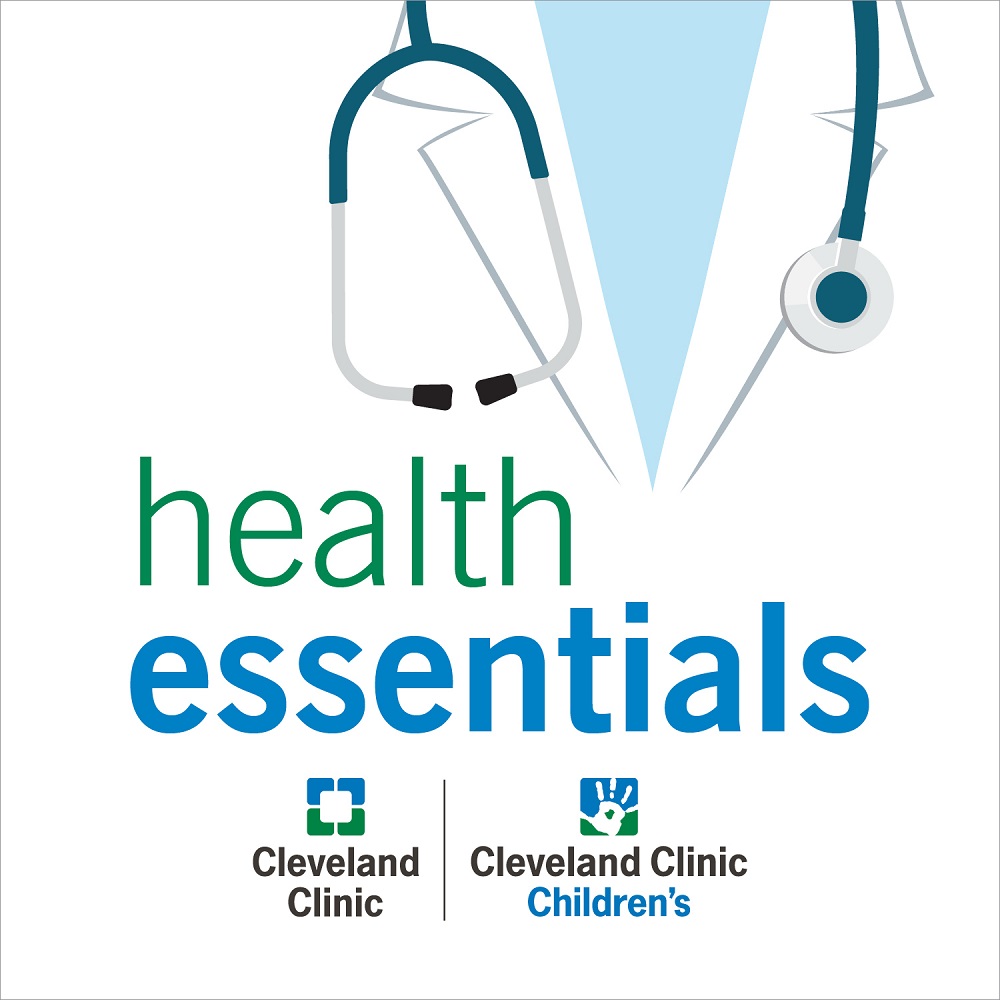
Health Essentials
Tune in for practical health advice from Cleveland Clinic experts. What's really the healthiest diet for you? How can you safely recover after a heart attack? Can you boost your immune system?
Cleveland Clinic is a nonprofit, multispecialty academic medical center that's recognized in the U.S. and throughout the world for its expertise and care. Our experts offer trusted advice on health, wellness and nutrition for the whole family.
Our podcasts are for informational purposes only and should not be relied upon as medical advice. They are not designed to replace a physician's medical assessment and medical judgment. Always consult first with your physician about anything related to your personal health.
